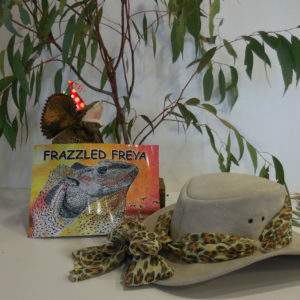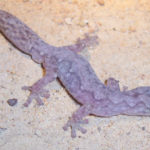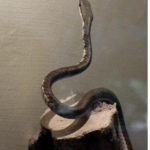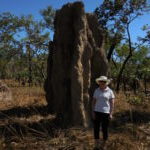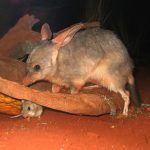My heart will always belong to Australia, my home, even though I have been fortunate to both live and travel overseas. I have experienced different places and cultures but will always come back to the place that I love the most. In my writing I reflect my passion for this wonderful country, her wildlife, and her striking beauty. Last week I was fortunate to be invited to write a guest blog for Joseph Drumheller on his site. Below is my guest blog post that will explain my thoughts on how to choose a topic for a children’s book that will touch the heart and lives of children everywhere.
1. Write from Personal Experience. Always lookout for those experiences where you can say “there’s a story in that.” Ideas come from some of the most everyday experiences. I like to use my experiences exploring our beautiful and vast country to write stories that include our amazing wildlife, including my newest release “Frazzled Freya.”
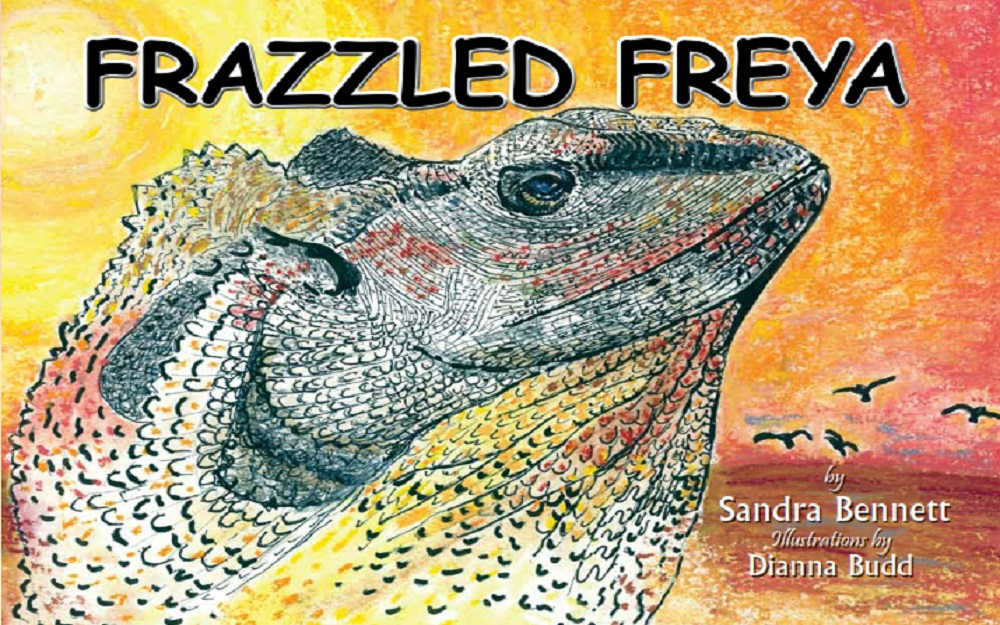 Have you ever been to the Australian Outback? To say it is very hot is an understatement. It is a place of contradiction, where you can see forever. Harsh and dry yet lush and beautiful. I just spent the last two years living in the Top End of the Northern Territory, exploring her wilderness and beauty. The days are long, hot and sticky. At times you are soaked from perspiration the minute you walk out your front door. The sun burns your skin and you feel as though you will melt if you don’t find shade fast. Yet in the midst of all this there are mountains, caves and even waterfalls in magnificent gorges. The colours of which are simply stunning as the light hits the red rock at sunset. I’ve swum in an Outback waterhole and dived under a waterfall. I’ve climbed to the top of an escarpment and watched the sun set over beautiful wetlands that stretch to the end of the earth. I’ve wandered through ancient Aboriginal campsites in caves so high above the heat of the desert floor that there is actually a cool breeze. I’ve been amazed by the incredible rock paintings just waiting to be found within these caves. I’ve even watched an amazing colourful array of water birds take flight across the wetlands and billabongs, all the while keeping an eye out for lurking crocodiles.
Have you ever been to the Australian Outback? To say it is very hot is an understatement. It is a place of contradiction, where you can see forever. Harsh and dry yet lush and beautiful. I just spent the last two years living in the Top End of the Northern Territory, exploring her wilderness and beauty. The days are long, hot and sticky. At times you are soaked from perspiration the minute you walk out your front door. The sun burns your skin and you feel as though you will melt if you don’t find shade fast. Yet in the midst of all this there are mountains, caves and even waterfalls in magnificent gorges. The colours of which are simply stunning as the light hits the red rock at sunset. I’ve swum in an Outback waterhole and dived under a waterfall. I’ve climbed to the top of an escarpment and watched the sun set over beautiful wetlands that stretch to the end of the earth. I’ve wandered through ancient Aboriginal campsites in caves so high above the heat of the desert floor that there is actually a cool breeze. I’ve been amazed by the incredible rock paintings just waiting to be found within these caves. I’ve even watched an amazing colourful array of water birds take flight across the wetlands and billabongs, all the while keeping an eye out for lurking crocodiles.
2. Write from Your Passion. If you are passionate about a topic, it will come out in your writing. All my experiences blossom into ideas for children’s picture books that help spread an understanding of our unique and massive country. The animal and birdlife that call Australia home share a special place in my heart, one that I hope to share with children from all around the world. The colours that are used in the illustrations depict the harshness and the heat of the landscape, yet portray her beauty as well. As I research the creatures in my stories, I discover interesting and fun facts that I like to include at the end to enable the book to become a learning tool. It becomes a place of discovery and wonder that encourages children to research further and understand a little more about this magnificent country.
 3. Find some Interesting or Intriguing Facts. Children thrive on learning unusual facts. Search for fun facts that will intrigue and delight the reader and develop a sense of curiosity. I add a fun fact page on each character at the end of the book for children to springboard into their research. Did you know a frill-neck lizard can only open its frill when its mouth is also opened wide? One fact that even I found hard to believe was that the spinifex hopping mouse is so adaptable to the dryness of the desert that it absorbs all the water it can so much that its urine is actually solid! That’s a pretty clever way to survive when there is a lack of water supply. Goannas lay their eggs in termite mounds and leave them there for incubation, only to return when the time comes to help dig out the little hatchlings. Then there are geckos, amazing little creatures with a sort of suction cap on the souls of their feet that enable them to defy gravity and walk upside down across the ceiling of your house. I’ve lived with these little fellows and they make great visitors to your home. They tend to eat the mosquitoes, which is quite an advantage living in the tropics.
3. Find some Interesting or Intriguing Facts. Children thrive on learning unusual facts. Search for fun facts that will intrigue and delight the reader and develop a sense of curiosity. I add a fun fact page on each character at the end of the book for children to springboard into their research. Did you know a frill-neck lizard can only open its frill when its mouth is also opened wide? One fact that even I found hard to believe was that the spinifex hopping mouse is so adaptable to the dryness of the desert that it absorbs all the water it can so much that its urine is actually solid! That’s a pretty clever way to survive when there is a lack of water supply. Goannas lay their eggs in termite mounds and leave them there for incubation, only to return when the time comes to help dig out the little hatchlings. Then there are geckos, amazing little creatures with a sort of suction cap on the souls of their feet that enable them to defy gravity and walk upside down across the ceiling of your house. I’ve lived with these little fellows and they make great visitors to your home. They tend to eat the mosquitoes, which is quite an advantage living in the tropics.
 4. Write about Relatable Characters. Children enjoy characters they can connect with. Characters that have problems or emotions like their own. Freya is the heroine in this story. She is a rather timid frill neck lizard. The idea to choose her as my main character was a simple one. Observing the way frill neck lizards react in the heat of the sun, running for shade, made her the obvious choice. They are harmless little reptiles that don’t stay out in the heat of the sun for very long and in fact if frightened, will stand on their hind legs and runaway as fast and as soon as they can.
4. Write about Relatable Characters. Children enjoy characters they can connect with. Characters that have problems or emotions like their own. Freya is the heroine in this story. She is a rather timid frill neck lizard. The idea to choose her as my main character was a simple one. Observing the way frill neck lizards react in the heat of the sun, running for shade, made her the obvious choice. They are harmless little reptiles that don’t stay out in the heat of the sun for very long and in fact if frightened, will stand on their hind legs and runaway as fast and as soon as they can.
 5. Include a Moral or Lesson. It needs to be subtle not obvious or preachy. Children like to feel that they have come to learn the lesson by reading the story, not by being told. With the help of her friends Freya learns to face her fears and realize that not all things are as frightening as they may appear. Through Freya’s plight children discover that it can be good to step outside of their comfort zone to help overcome their own fears.
5. Include a Moral or Lesson. It needs to be subtle not obvious or preachy. Children like to feel that they have come to learn the lesson by reading the story, not by being told. With the help of her friends Freya learns to face her fears and realize that not all things are as frightening as they may appear. Through Freya’s plight children discover that it can be good to step outside of their comfort zone to help overcome their own fears.
The sights, colours, smells, experiences, all that encompass the Australian Outback have helped bring “Frazzled Freya” to fruition. My passion for sharing this wonderful country and the unique wildlife contained within her borders, is a topic I have chosen to write children’s books about. What topic would choose?

